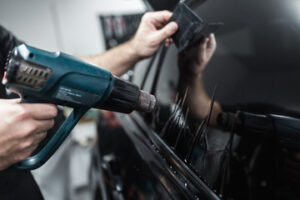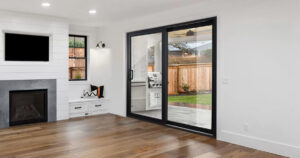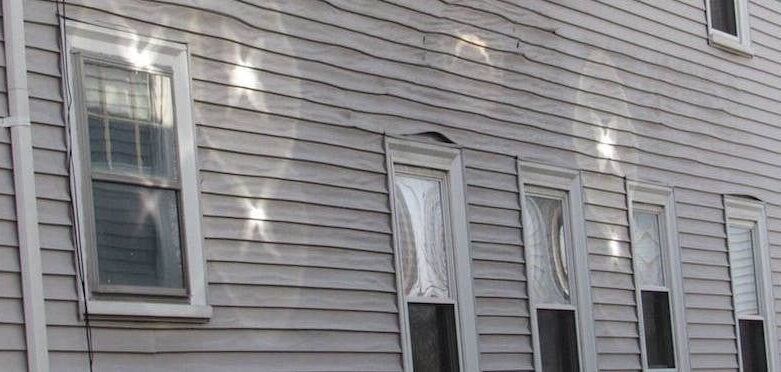Professional window cleaners use a wide range of equipment, including telescoping cleaning poles with attachable heads that reach second-story windows. Typically, these kits start at about $100 and can be purchased at home improvement stores.

When washing windows, use a rubber-edged squeegee to avoid spots and smears. Also, consider a squeegee with a microfiber blade to wipe surfaces clean without leaving streaks. Visit Website to learn more.
Allergens like dust, pet dander and pollen collect on windows and can make people sick. By having your windows cleaned regularly, you can reduce the amount of allergens in your home. This will also help with any asthma or other respiratory conditions you may have. Window cleaning professionals use commercial grade equipment to rinse away all the dirt and contaminants from your glass. They also scrub and squeegee the edges and sills to leave your windows spotless and dry.
Before starting on the actual cleaning, it is a good idea to close all the windows and wipe down the frames and sills with a clean, lint-free microfiber cloth. This will prevent dust from mixing with your window cleaning solution and making streaks on the glass.
It is also a good time to remove and label the screens on the windows. These should be washed in a bucket of hot water and a mild detergent such as dawn or dishwashing liquid. Then they should be rinsed off with a hose on a sprayer set to “water only.” After the screens are dry, they can be put back onto the windows.
Using a microfiber cloth, start wiping the glass panes with a circular motion. Work from the top of the window down, catching any drips as you go along. Change to a clean section of the cloth frequently as it becomes soiled. For tough stains, apply a little cleaner to the cloth and rub in a circular motion. Be careful not to scrub too hard, as the glass can easily scratch.
If the windows are particularly dirty, you may want to use a soft scrub brush or nonabrasive sponge. This can be especially useful if there are rust spots or bird droppings on the glass. For stubborn stains that are difficult to remove with any of the other methods, try a razor blade mounted in a plastic holder. Be sure to test the blade on an inconspicuous area to ensure that it won’t scratch the glass. If the stains persist, you might need to sand the surface of the glass with an electric sander and re-clean the window.
Stains Removal
Water stains can be a real eyesore on your windows. They can make your glass appear cloudy or hazy, which reduces visibility and can diminish the overall aesthetic of your window. They also create a breeding ground for mold, which can affect indoor air quality and cause a variety of health problems for the residents of your home or business.
There are a number of different ways to remove these stains during the window cleaning process, including a simple solution of vinegar and water, as well as traditional glass cleaners. Regardless of the product you use, it is important to scrub your windows thoroughly to ensure that all traces of the stain are removed and your windows are left spotless.
Depending on the type of stain, you may need to use a more aggressive cleaner, such as Diamond Magic. This product is safe on most surfaces and can be used on a wide variety of stained materials. Alternatively, you can try using a baking soda solution. Mixing baking soda with warm water will create a paste that you can then apply to the stained area of the window. The abrasiveness of the baking soda will help to break down the mineral deposits, allowing you to wipe away the water spots and leaving the glass clean and clear.
Another great way to get rid of hard water stains is by rubbing the window with lemons. The acidity of the lemons can dissolve the water stains, which will make them much easier to wipe off. Once the stains are gone, rinse the window with clean water and dry it with a towel to prevent them from reappearing. If the stains are particularly stubborn, you can try using a commercially-produced hard water stain remover. Follow the instructions on the label to determine how much of the product to use and how to apply it to the window. After applying the solution, let it sit for a while to give it time to break down the stains. Rinse the window thoroughly and then use a glass cleaner to make sure the residue is completely removed.
Cleaning the Frames
It’s important to keep window frames and sills clean as well, since they can collect dirt, soot, dust, cobwebs, dead insects, gnats, and other debris. They should be vacuumed or dusted with a soft brush, paying special attention to corners and crevices. They can also be wiped down with cleaning wipes that can be purchased at most home improvement stores. Always read the label to be sure that the wipes are safe to use on the particular surface you’re cleaning, and don’t forget that they can leave a residue behind if not completely removed.
When washing a wooden frame or sill, it’s usually best to start by applying the cleaning solution to a cloth rather than directly to the wood. This will prevent over-saturation, which can cause the wood to swell or warp. For this stage, a non-detergent soap solution that’s safe for wood is typically preferred. A teaspoon of bicarbonate of soda can be added to the solution if necessary for a particularly stubborn stain. For vinyl or aluminum frames, a mild soap or commercial glass cleaner can usually be used.
Once the soapy solution has been applied, it’s important to scrub thoroughly in order to remove any built-up grime and stains. A soft-bristled brush may be needed for tough spots or in the case of a very stubborn and persistent oxidation spot, it might be advisable to try a bit of sandpaper for extra power.
After a thorough scrubbing, the frame should be rinsed off with a damp cloth. Wooden frames should be dried very thoroughly, as too much moisture can lead to rot or mold growth. Vinyl or aluminum frames can handle a little more water than wood, but they should still be dried quickly in order to avoid damage.
Afterwards, the window tracks should be cleaned using a dusting powder that’s safe for your particular type of frame. The powder will loosen any dirt that’s stuck and make it easier to wash away with a brush or a sponge, or even a squeegee. Be sure to check out our guide to the best squeegees for more help in choosing the right tool for your job.
Squeegeeing
As the final step of window cleaning, a squeegee removes any residue that remains on the glass. A squeegee is an essential tool for achieving a streak-free finish, and it’s easy to see why pros use them. They’re available in a variety of shapes, sizes and materials, but most are made of durable plastic with a rubber non-slip coating. Some models have a short handle while others are equipped with telescoping poles that extend more than five feet. A long-handled squeegee is essential if you need to reach tall windows.
The first thing you’ll want to do when using a squeegee is wipe it down with a clean cloth or rag to remove any excess water or cleaner. You can also apply a degreaser or mineral deposit remover to the squeegee before use if your windows are especially dirty. A squeegee with a textured blade (for example, one of Ettore’s top-rated models) will be better at removing water spots than a plain rubber squeegee.
When squeegeing, avoid wiping in straight lines. Instead, move the squeegee across the glass in an “S” shape to avoid leaving any streaks. As you make each S pass, periodically wipe the squeegee’s rubber blade with a clean cloth to avoid smearing the cleaner over an area that’s already dry.
Aside from avoiding streaks, you’ll also want to avoid any mistakes that can slow the cleaning process. A common mistake is cleaning a window in direct sunlight, which can cause the cleaner to dry on the glass before you can wipe it off. This can lead to hard-to-remove streaks. To prevent this, try to clean windows in the shade if possible.
Another common mistake is relying on paper towels and newspapers for scrubbing and drying, which can leave lint behind on the glass. You should instead use reusable microfiber cloths, which are super absorbent and leave windows shining and streak-free. You can find them at home and garden stores or online retailers.



